#Daphnis and Chloe 1743
Photo

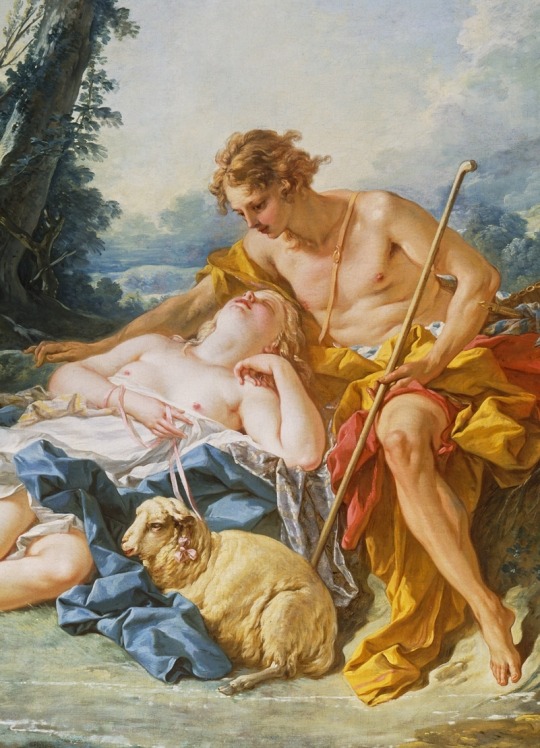

Corset from the “Portrait” Collection & Jeans from the “Cut & Slash” Collection
Vivienne Westwood
Fall/Winter 1991 & Spring/Summer 1991
At the time of this acquisition, Vivienne Westwood is regarded as the doyenne of British fashion. Controversial, acclaimed, eccentric, classic, punk, confronting and essentially British all describe Westwood's work. Opening a shop at 430 King's Road Chelsea, London with then partner Malcolm McClaren in 1971, Westwood sold her own designs through this shop, later called the World's End. Her early work of the 1970s harked back to fifties classic fashion at a time when hippy ideas were dominating fashion. Her work became increasingly associated with and inspired by the punk movement, epitomised by her relationship, through McClaren, with the punk rockers, the Sex Pistols, who first performed in 1976. She became their costume designer. Gene Krell describes Westwood as 'punk's prototype and greatest showpiece.' After punk, her interests became more historical, adapting and reinterpreting materials and designs into her own style.
The corset was designed for her Portrait collection AW 1991. Westwood's revival of the corset ws one of her most important fashion ideas of the 1990s. Her corsets were modelled on the 18th century style, flattening and raising the bosom. The corset is photographically printed with a detail from Boucher's 'Daphnis and Chloe (Shepherd watching a sleeping shepherdess, 1743-5)' in the Wallace Collection, London.
The jeans with detachable satin codpiece come from Westwood's Cut and Slash collection, Spring Summer 1990-1991. With this collection, Westwood explored clothing that was androgynous. Inspired by historical portraits of men in slashed costume wearing codpieces, Westwood employed the 17th century technique of slashing she had studied at the V and A. Westwood slashed demin, cotton, satin and silk for the collection and achieved the effect in various ways: the large slashes were hand-cut while the smaller, regular cuts were made using a broderie anglais programme in which embroidered sections were cut, but the embroidery itself was omitted. The jeans with detachable codpiece were worn by the donor with a Westwood corset.
Her style is individualistic and can push the boundaries of acceptability. While her range is extremely wide, her clothes bear her signature emphasis on intricate craftsmanship. Her work draws from a wide range of influences, particularly historical periods and collections, like the Wallace Collection. In 2004, the Victoria and Albert Museum held a major retrospective of her work. Each collection has a theme and title. She produces a range of collections twice a year, currently: gold label, red label, man and anglomania. Her range of accessories is extensive: bags, women's and men's shoes, jewellery and two lines of perfumes (Boudoir and Libertine). Her works promote a sumptuous and glamorous yet rebellious and challenging take on British identity, gender and politics. She said 'I am English, and I parody the English, with the hope that my clothing will have a international significance.'
Powerhouse Museum (Object No. 2006/96/12 & Object No.2006/96/7)
#corset#vivienne westwood#1990s#fashion history#vintage fashion#20th century#1991#fall#winter#spring#summer#art#art history#denim#cotton#lycra#england#powerhouse museum
217 notes
·
View notes
Text
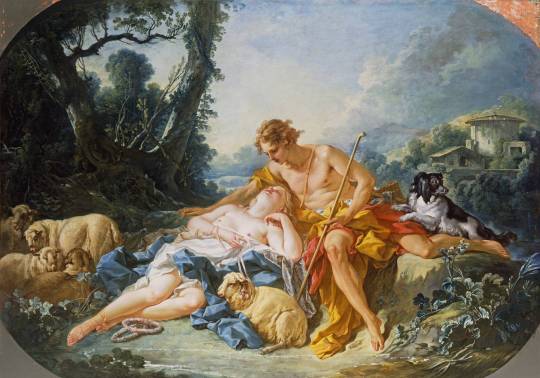
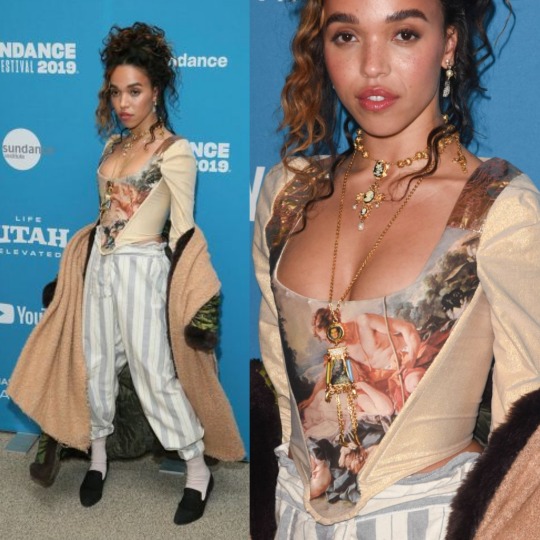
1. Daphnis and Chloe by François Boucher, 1743 (The Wallace Collection)
2. FKA Twigs at the Sundance Festival in 2019, wearing corset printed with 'Daphnis and Chloe', from Vivienne Westwood's 'Portrait' collection, Autumn-Winter 1990-91.
#vivienne westwood#fashion#fashion history#françois boucher#fka twigs#art history#the wallace collection#pastoral#red carpet#celebrity fashion#celebrity style#musician#sundance#2019#aw90#1990s#fw90#portrait collection#fine art#surface pattern#textiles#textile design#print#printed textiles#british designer#british fashion#rococo#18th century
57 notes
·
View notes
Photo

François Boucher (French, 1703-1770)
Daphnis and Chloe, 1743
The Wallace Collection
Daphnis and Chloe, work by Longus, written in the 2nd or 3rd century ce and considered the first pastoral prose romance. The work tells the story of two foundlings who are brought up by shepherds and who fall in love at an early age. They are soon kidnapped and separated, but after several adventures they are reunited.
#François Boucher#french#french art#mediterranean#classical art#Daphnis et Chloë#1700s#art#france#western civilization#old stuff
51 notes
·
View notes
Photo
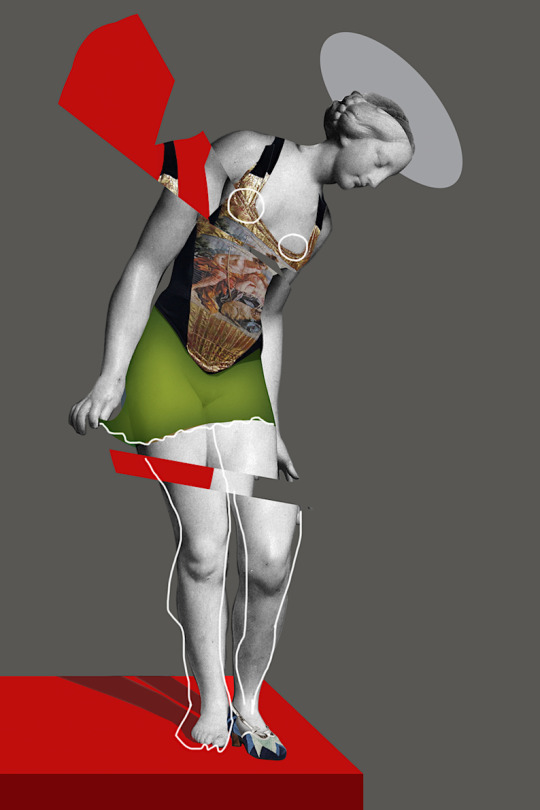
eucanthos

Étienne Maurice Falconet: Pygmalion and Galatea, 1763.
Vivienne Westwood: François Boucher Corset [ Daphnis and Chloe, 1743 ]
Sonia Delaunay Court shoes, 1925
thnx etyu567 & perpulchra & tierradentro
#eucanthos#collage#sculpture#Galatea#Sonia Delaunay#fashion#Étienne Maurice Falconet#Vivienne Westwood#Angels#corset
30 notes
·
View notes
Photo

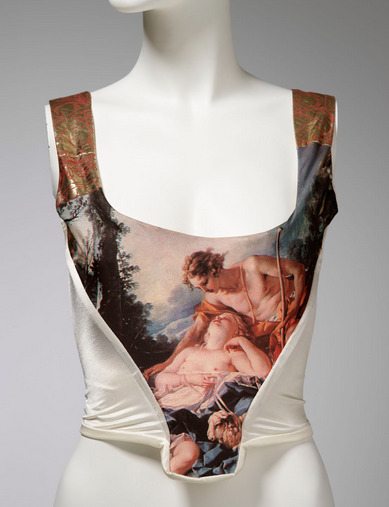
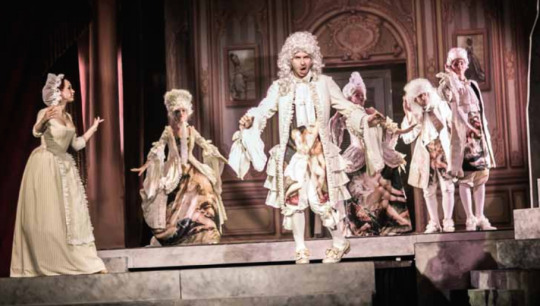
The Il Muto costumes in POTO Estonia seems to have picked up a clue or two from Vivienne Westwood. More specifically, her FW 1991 collection “Portrait”. The Westwood corset here (top right) is photographically printed with a detail from Boucher's “Daphnis and Chloe” (1743-45, painting today in the Wallace Collection, London).
Westwood is often credited for re-introducing the corset in the fashion scene. But both her 1991 collections featured modern and historically inspired garments with artworks printed on them, often towards white details. And this is exactly what they did for the Estonian Il Muto. The costumes are by Ellen Cairns.
#costume nerding#phantom of the opera#vivienne westwood#il muto#ellen cairns#poto estonia#non replica
56 notes
·
View notes
Text

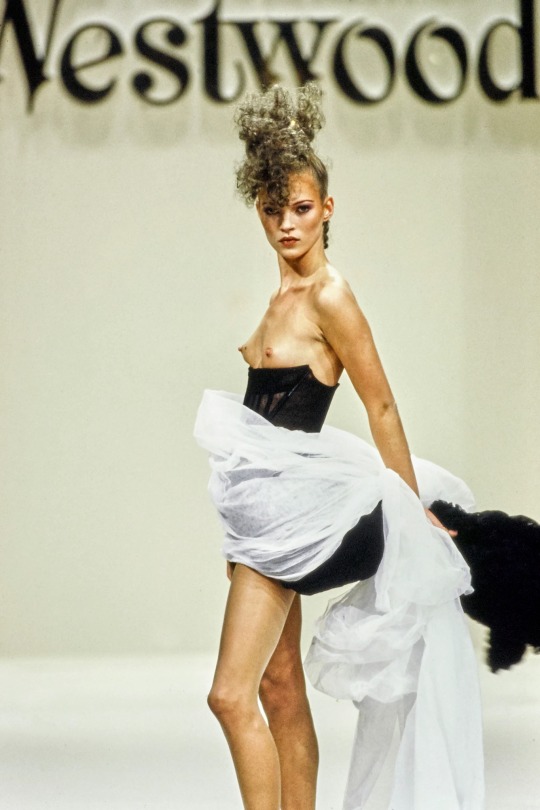
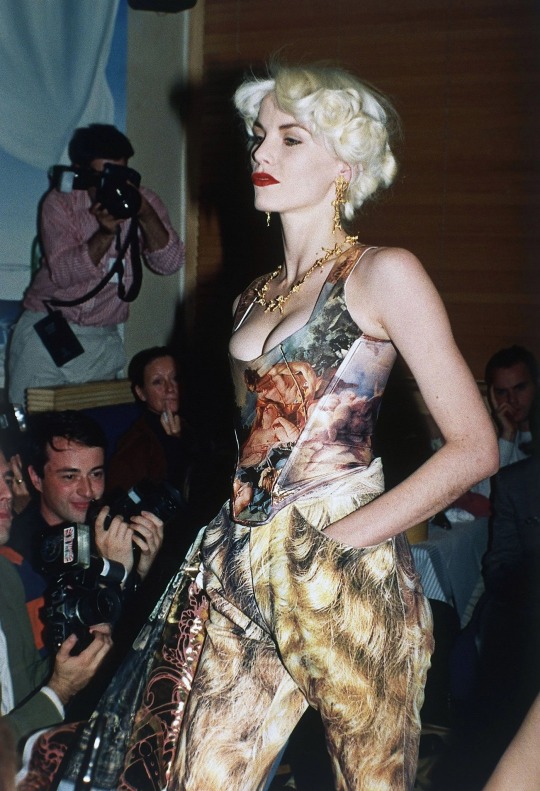
Artist Inspiration: Vivienne Westwood
Vivienne Westwood represents a new wave of feminist thinking. Labelling herself as an anti-feminist, Westwood and her designs champion female empowerment rather than Masculine imitation, evident through her re-interpretation of the traditional corset, subverting its purpose and bring it into the current era in her 1990 Spring/Summer Collection. Her 1990 corset from her ‘portrait collection’ printed the 1743 French Rococo painting ‘Daphnis and Chloe, Shepard Watching a Sleeping Shepardess’ by François Boucher. With this subject matter and shape, she emphasised the erotic power of the female form , but employed more modern, flexible materials to improve comfort.
5 notes
·
View notes
Photo

François Boucher Daphnis and Chloe 1743
10 notes
·
View notes
Photo

François Boucher
Paris 1703 – Paris 1770
Study for the Daphnis and Chloe in the Wallace Collection, London
About 1743-1745
Red chalk
Montreal Museum of Fine Arts
226 notes
·
View notes